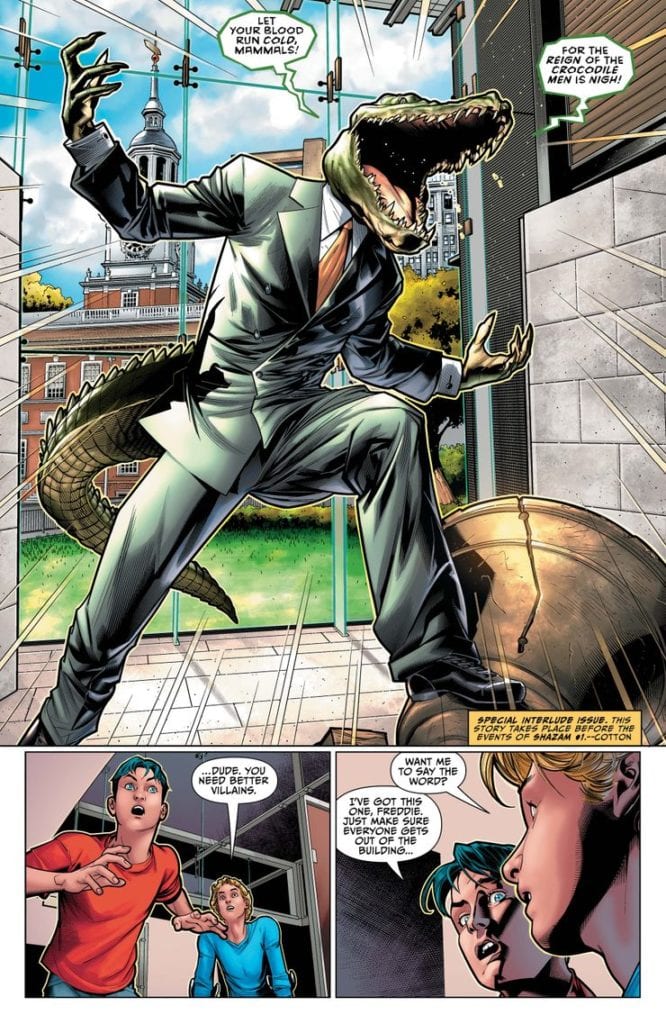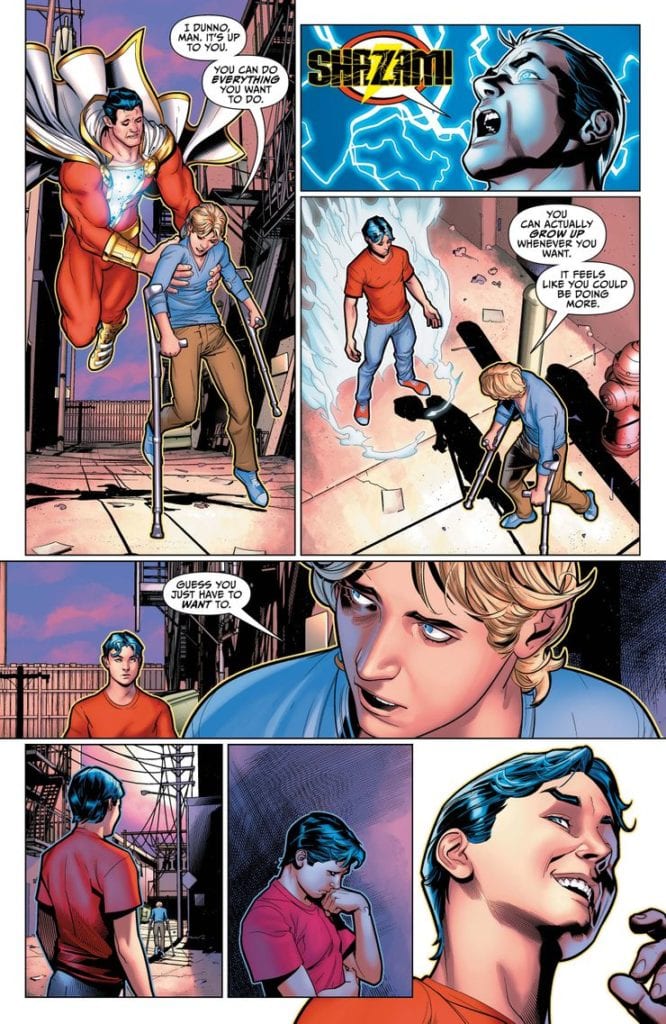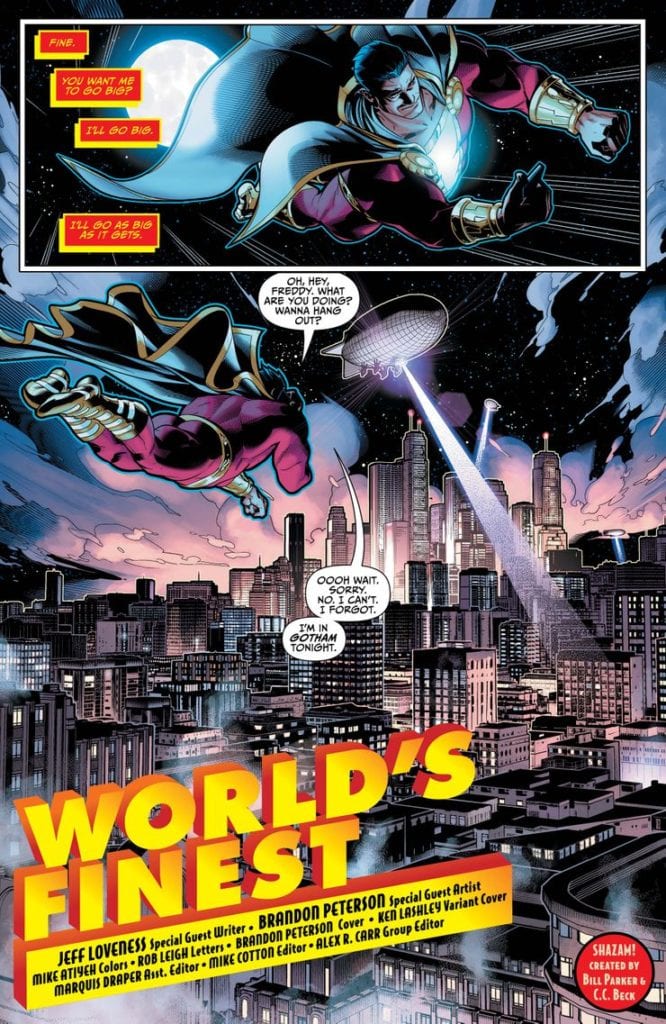In DC Comics’ Shazam #12 (on sale June 2,) special guest writer Jeff Loveness sends Billy Batson to Gotham, where he hopes to join the “big leagues” of superheroes. During this road trip, Loveness explores Billy’s insecurity, often veiled by his arrogance, and leaves the hero as a stronger character.

Shazam 12
Writer: Jeff Loveness
Artist: Brandon Peterson
Colors: MIke Atiyeh
Letters: Rob Leigh
It’d be easy to assume that this week’s issue of Shazam is skippable; it takes place before the series begins, so a story by the special guest writer may seem inconsequential. But a one-off trip to Gotham ultimately teaches Billy Batson a transformative lesson: fear can make us stronger.
This message may seem fairly basic, but for a young caped crusader like Billy, it has the potential to make him a better hero. To maximize the moral’s impact, Loveness juxtaposes Billy’s naiveté with the growth we see at the end of the story. As with other Shazam stories, Billy’s brash behavior can make it hard to root for him. Hoping to prove himself as a legitimate hero, he foolishly charges into Gotham. Billy bites off more than he can chew, leading to a nearly disastrous face-off with the Scarecrow.

Early on, Loveness establishes Billy’s ego as the fatal flaw in this self-contained story. After Shazam easily defeats Crocodile Man, Billy’s closest friend, Freddy Freeman, repeatedly tells him he needs better villains. Freeman drives the point home with an emphatic point, where artist Brandon Peterson adds to the emotional delivery of the line. Freddy emphatically states, “It feels like you could be doing more. Guess you just have to want to.” Here, Peterson shows Freddy walking away from Billy and giving him harsh side-eye. Freddy’s words are the catalyst for Shazam’s trip to Gotham, as Billy wants to prove his friend wrong. Starting with the first shot of Gotham, Loveness and the art team constantly contrast Billy’s innocence with Gotham’s darkness.

In his bright red costume, Shazam sticks out like a sore thumb when Peterson shows him flying above the menacing Gotham skyline. Once the Scarecrow enters the picture, this difference is even clearer. The villain looks like nightmare fuel come to life; Peterson exaggerates his demonic mask to make him even more terrifying. This horror isn’t confined to the Scarecrow, though; while Billy feels the effects of the villain’s gas, Peterson shows Billy fearfully screaming while he’s trapped in the symbol on Shazam’s costume. Here, the art augments Loveness’ script because it complements the narrative that Billy is scared of being a superhero.
Loveness explores this theme and wraps it up by the end of this issue; working with Batman helps Billy see that heroes can find strength in fear. But there’s room for more development of this dynamic. A character being afraid of their responsibilities as a caped crusader isn’t an original concept; plenty of superheroes grapple with this concern. But Billy’s young age makes it an even more compelling theme, especially as it relates to his work with Justice League-level heroes. Hopefully, another writer will pick up the seeds Loveness plants in this issue.
Shazam #12 features a complete standalone story that offers a wholesome message. It’s a perfect jumping-off point for new readers and/or a brief interlude for long-term fans of the series. Plus, it offers a chance to see Shazam team up with Batman, which is a dynamic we haven’t seen much recently.
What’d you think of Shazam #12? Do you like seeing Shazam fight alongside Batman?
Check your local comic shop to see if you can get Shazam #12 there.

